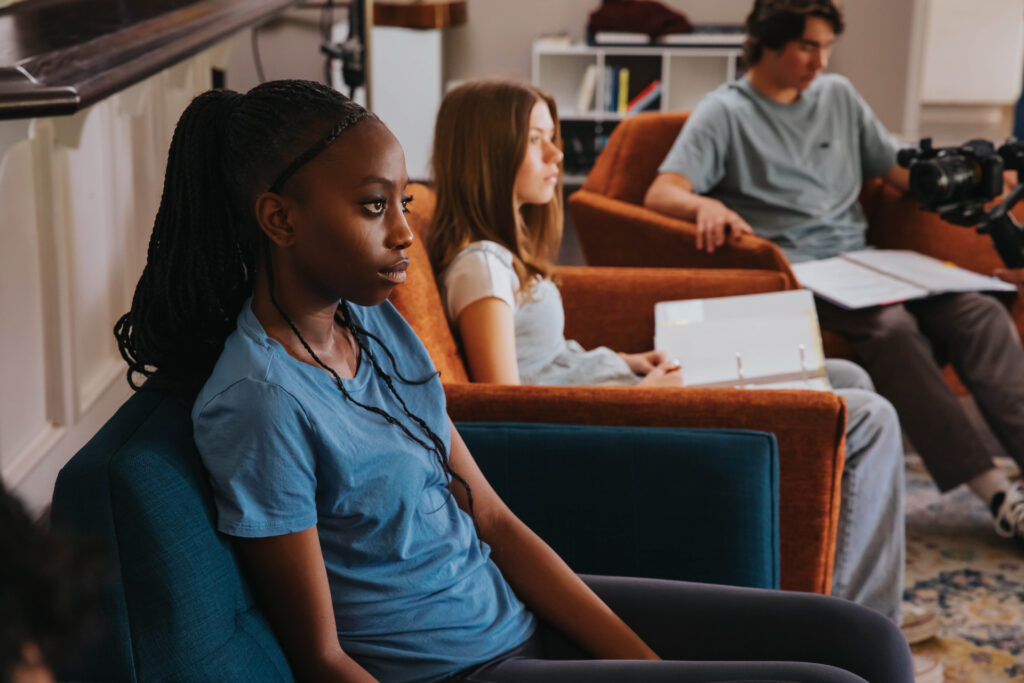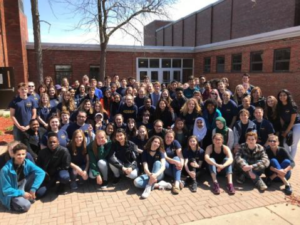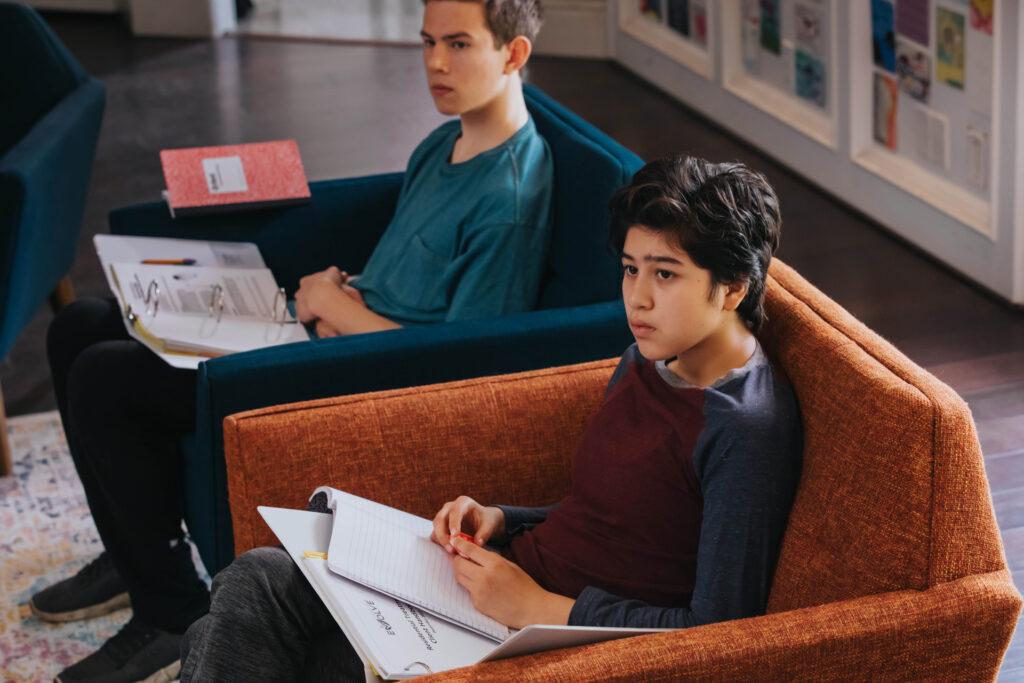Mental health issues in adolescents are increasing rapidly. According to the CDC’s Youth Risk Behavior Survey, more than 30% of high school students around the U.S. reported “persistent feelings of sadness or hopelessness” in recent years. More than 17% have seriously considered suicide. And more than 13% have even made a plan.
These numbers have been rising since 2007.
Some students are using their time and energy to try and put a stop to these statistics. Aware of the power peers can have on each other—both positive and negative—more and more teens are forming clubs and campaigns in high school to combat the stigma associated with issues like depression, anxiety, suicidal ideation, OCD, and more.
Check out the following mental health clubs teens are forming (and participating in), and see if you want to create your own!

1. Bring Change to Mind: BC2M
“Bring Change to Mind” (or BC2M) is a student-led club in many high schools throughout California and the country. Founded in 2010, its mission is to end the stigma and discrimination surrounding mental illness. While the BC2M parent organization is led by adults in LA, each of its high school branches—the clubs—are led by teen advisors themselves.
In BC2M clubs, teen members lead activities centering around mental health in order to open up candid conversations. Peers meet weekly or biweekly to discuss mental health topics and participate in activities promoting wellness. For example, one popular activity, called Little Worries, club members anonymously jotting down something they’ve been stressing out about throughout the last week, and then displaying all the Post-It notes on the wall. Peers see that they’re not alone in their struggles.

While other organizations simply seek on raising awareness, BC2M focuses on actively getting help: As part of the BC2M guidelines, any club member who shares a mental health concern is immediately given a referral to a mental health professional.
One BC2M member, 17-year-old Bryn, says she started a BC2M club at her high school in response to several shocking teen suicides in her Palo Alto community. “I really just wanted to create change,” she said in BC2M’s 2016 video.
If you want to start a BC2M club in your school, know that you’ll be backed all the way. BC2M gives you a guidebook with discussion topics, marketing materials (see the creative ad to the left), a $500 grant for related activities, and assistance with bringing mental health training and speakers to your school.
To learn more about BC2M Clubs in High Schools, please visit their website here:
Bring Change to Mind: Let’s Talk About Mental Health
HIGH SCHOOL PROGRAM
2. Peer-to-Peer Depression Awareness Program
In 2009, the University of Michigan Depression Center and Ann Arbor Public Schools collaborated on a unique mental health awareness program. Their strategy: empower students so they can empower schools. Their campaign was called Peer-to-Peer (P2P) Depression Awareness Program. Last year, 12 high schools around Michigan participated.
How does it work? Every year, participating high schools nominate individual students (or groups of students) to attend an annual mental-health training at the University of Michigan. There, clinical psychologists and professors train the high school students on signs and symptoms of depression, anxiety, and other mental illnesses. Clinicians also teach them mindfulness strategies. The goal? Educate the students so they can then educate their peers.
After the 6-hour training, students then brainstorm ideas for creating mental-health awareness campaigns in their individual schools. They work together with their individual faculty mentors, and then return back to school to put their proposed P2P plans into action.

During the 2017-18 school year, more than a hundred students from 12 high schools in Michigan attended the training. After the training, each group of students developed their own mental health awareness campaign at their school. Some of the campaigns focused on positive wellness and prevention, others focused on removing the stigma around mental illnesses, and still others encouraged seeking help when in emotional distress (“When I becomes We, Illness Becomes Wellness”). Students hand out swag, screen films related to mental health, hold dance parties, give out stress balls and hot cocoa during finals, and more.
3. Erika’s Lighthouse, Our Minds Matter
There are other clubs geared toward high schoolers.
Based out of Illinois, Erika’s Lighthouse focuses on depression. It aims to help high school students use their voices to “Get Depression Out of the Dark.” To that end, this nonprofit helps teens organize depression awareness campaigns and wellness activities. Think: poster campaigns, writing holiday cards, care packages during finals week, and skate-a-thons. Erika’s Lighthouse HQ provides the money and the ideas, the teens carry them out in their individual clubs.

Erika’s Lighthouse also provides schools all over the country with free access to educational programming about mental health, including lesson plans, discussion guides, and activity materials, such as their popular “student check-in” cards, which ask students whether they want to see a counselor, don’t want to see a counselor, or need to see a counselor immediately. Teachers give out the cards at the end of class, and all students are required to fill them out. This way, no one’s singled out.
On the East Coast, there’s also the popular “Our Minds Matter” club, founded by the Josh Anderson Foundation (a suicide-prevention nonprofit). The goal of an Our Minds Matter clubs is to teach students that not only is it okay to get help when you’re struggling, but you need to. Our Minds Matter also emphasizes healthy self-care and social connections. The club provides the resources and funds to create three student-led activities per month.
4. NAMI

Wherever you are in the States, you can start a NAMI On Campus club. NAMI clubs are open to students with mental health conditions, those with family members who have such conditions, or high school students who are just advocates of mental health. The goal of NAMI clubs is to create an inclusive, safe, and supportive school environment. NAMI has branches all over the country, so contact your local branch if you’re interested in getting involved.
Do These Clubs Really Create Change?
T-shirts, wristbands, posters, swag, care packages: do these things really affect high schoolers’ mental health? If the research from clubs like Bring Change to Mind and Peer-to-Peer are any indication, then yes.
Researchers from UC Berkeley and UC San Francisco collaborated on an internal study to measure whether BC2M-High School clubs were really making an impact on its members. Over 700 students in schools with active BC2M clubs participated in the study. The researchers found that as the result of participating in these clubs, high school students experienced significant reductions in previously held mental health stigma.
Apparently, P2P is working too. University of Michigan researchers found that the P2P program positively affected both the P2P team leaders and their peers at school:
“The P2P team leaders showed statistically significant improvement in their confidence in identifying and helping others with depression and in their comfort speaking with their peers about mental health issues. Students exposed to the depression campaigns showed an increase in the likelihood that they would ask for help if they had symptoms of depression for more than two weeks and significant decrease in embarrassment about being seen going to the school social worker or psychologist’s office.”

How to Start a Mental Health Club at Your High School
You can make a difference. Start a mental health club at your high school with these simple tips to make it happen:
- Identify Purpose and Goals: Define the mission and objectives of your mental health club, such as promoting mental wellness through exercise, raising awareness, or providing support to your community. You can start your own club or start a branch of nationwide clubs like BC2M and NAMI on Campus Clubs, and align with their purpose.
- Recruit Members and Leadership: Gather interested students, and appoint leaders to organize meetings, events, and activities. Seek support from teachers or counselors.
- Plan Activities and Outreach: Develop a schedule of meetings, workshops, and campaigns. Reach out to the school administration for resources and promote the club to the student body.
Creating Community
Student-led clubs are a great way to get your school thinking about mental health. Not only will you get leadership experience and educate yourself on depression, anxiety, suicide, and more, you will open up the conversation and normalize what many of your friends might be struggling with on a daily basis. If just one classmate gets the courage to seek help because of your awareness campaign, it’s worth the effort.
Frequently Asked Questions About Mental Health Clubs in High School
What exactly is a high school mental health club?
Mental health clubs in high school are student-led organizations or groups that aim to promote mental health awareness and advocate for mental wellness within the school community.
What activities do mental health clubs typically engage in?
Mental health clubs may organize a variety of activities, including awareness campaigns, guest speaker events, educational workshops, or peer support groups. Other activities might include mindfulness or stress reduction activities, fundraisers for mental health organizations, or advocacy initiatives to address mental health stigma.
Why are mental health clubs important in schools?
Mental health clubs in high school play a crucial role in raising awareness about mental health issues and reducing stigma. They foster a supportive and inclusive school culture, provide resources and support for students experiencing mental health challenges, and promote overall well-being and resilience among students and staff.
How can students get involved in a mental health club at school?
Students can get involved in a mental health club by joining an existing club or creating their own. At club meetings and events, students have the opportunity to share their own experiences or perspectives on mental health and participate in advocacy efforts to promote mental wellness in the school community.
Are mental health clubs only for students with mental health issues?
No, mental health clubs are open to all students, regardless of whether they have personal experience with mental health issues. These clubs aim to create a supportive and inclusive environment where all students can learn about mental health, access resources, and contribute to mental wellness initiatives.
How can mental health clubs benefit the school community?
Mental health clubs can benefit the school community by fostering a culture of empathy, understanding, and support for mental health issues. These clubs empower students to seek help when needed, provide education and resources to promote mental wellness, and create a sense of belonging and connection among students.
Who oversees mental health clubs at school?
Mental health clubs may be overseen by a faculty advisor or school counselor who provides guidance, support, and assistance with planning and organizing activities. However, the club is typically student-led, with members taking on leadership roles and responsibilities.
Are mental health clubs confidential?
While mental health clubs strive to create a safe and confidential space for students to discuss mental health issues, it’s essential to clarify the limits of confidentiality and ensure that students understand their rights and responsibilities regarding privacy and confidentiality within the club setting.
How can mental health clubs collaborate with other school organizations?
Mental health clubs can collaborate with other school organizations, such as student government, peer counseling programs, diversity clubs, and wellness committees. Together, they can coordinate events, share resources, and advocate for mental health initiatives that benefit the entire school community. Collaboration can enhance the impact and reach of mental health efforts within the school.






